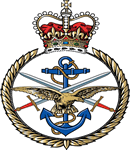Commemorated: | |||
| 1. Memorial: | Hollybrook Memorial | Southampton | |
| 2. Book: | The (1921) Masonic Roll of Honour 1914-1918 | Pg.119 | |
| 3. Memorial: | The (1940) Scroll - WW1 Roll of Honour | 8D GQS | |
Awards & Titles: | |||
Family :
Husband of R. C. Cockrell, of 21, Cornelia St., Fairview, Johannesburg.Service Life:
Campaigns:
- The First World War 1914-1918, World-wide.
| Unit / Ship / Est.: 5th Bn.South African Native Labour Corps (Medical Sect.) |
| Action : SS Mendi, Sinking of |
The Mendi was sailing from Cape Town bound for Le Havre. After leaving Plymouth in thick mist some 12 miles of St Catherines Point, Isle of Wight, she was in collision with the 11,000 ton liner SS Darro and sand with the loss of 607 Officers and men of the Native Battalion and 29 crew, almost one third of the names on the Memorial. Further details can be found in African Voices from Two World Wars - David Killingray"
At the beginning of the First World War tasks such as moving stores, repairing roads and building defences were carried out by the fighting soldier when he was withdrawn from the Front Line for rest. However, by early 1917 the need for labour on the Western Front had become particularly acute as a result of the unprecedented scale of death and injury. The South African Native Labour Corps came to France early in 1917, and established a base at Arques-la-Bataille. Respected warriors and tribal leaders, men of the South African Native Labour Corps found themselves relegated to supporting roles under the command of white Commissioned Officers. They were not permitted to carry weapons or mix with white communities.
The Loss of the Mendi: The SS Mendi sailed from South Africa on 19 January. She was carrying the last contingent of the South African Native Labour Corps on their way to the Western Front. Also on board were five white officers, 17 non-commissioned officers and 33 crewmen. After a brief stop at Plymouth, the Mendi set sail for Le Havre late on the 20 February. In the early hours of 21 February, the steamship Darro, travelling at full speed and emitting no warning signals despite heavy fog, rammed the SS Mendi. Within 20 minutes, the Mendi sank, taking her crew with her. 616 members of the SANLC died, some on impact, but life drained from most in the icy waters of the English Channel. Legend has it that when the Mendi sank, Reverend Isaac Dyoba rallied the men calling Be quiet and calm my countrymen, for what is taking place now is what you came here to do. We are going to die, and that is what we came for. Brothers, we are drilling the death drill. I, a Zulu, say here and now that you are all my brothers... Xhosas, Swazis, Pondos, Basotho and all others, let us die like warriors. We are the sons of Africa. Raise your war cries my brothers, for though they made us leave our assegais back in the kraals, our voices are left with our bodies.. Let us die like brothers. News of the loss of the Mendi did not reach the families and communities of the men for several weeks after the sinking. Members of the South African National Assembly stood in silence on hearing the news, to honour the men who had died in the disaster.
Commemorating the Dead the majority of the men who died on the Mendi have no known graves and are commemorated by the Commonwealth War Graves Commission on the Hollybrook Memorial in Southampton. Despite the inequality of their lives, in death they are commemorated equally and without distinction. The 17 panels of the Hollybrook Memorial which bear the names of the dead of the Mendi were replaced in early 2007 to correct some linguistic inaccuracies in spelling of names. Working with various records and an expert in South African languages, the Commission was able to correct the discrepancies which had been uncovered. At a time when black men and women throughout the world were struggling to get their voices heard, the Commonwealth War Graves Commission treated the dead with compassion and equality. In South Africa and beyond, the tragedy of the Mendi became legendary. However, the survivors returned home only to be denied recognition and to return to segregation and inequality. A plaque at the Delville Wood Museum in France, a little known memorial in Port Elizabeth and the new Mendi memorial in Avalon graveyard, Soweto, which was inaugurated by Queen Elizabeth II and Nelson Mandela in 1995, also commemorate the disaster. Two modern day vessels of the South African Navy also commemorate the disaster. On the 23 August 2004, en-route from the German shipyards where she had been built to South Africa, the SAS Mendi stopped where the SS Mendi sank and lay wreaths in remembrance of those who had died. The SAS Mendi has a sister ship called the SAS Isaac Dyoba, named in honour of the Reverend Isaac Dyoba who had rallied the men on the Mendi in 1917.
Masonic :
| Type | Lodge Name and No. | Province/District : |
|---|---|---|
| Mother : | Albany No. 389 E.C. | South Africa (Eastern) |
Initiated | Passed | Raised |
1st May 1902 | 5th June 1902 | 10th July 1902 |
Source :
The project globally acknowledges the following as sources of information for research across the whole database:
- The Commonwealth War Graves Commission
- The (UK) National Archives
- Ancestry.co.uk - Genealogy, Family Trees & Family History online
- ugle.org.uk - The records of the United Grand Lodge of England including the Library and Museum of Freemasonry
Additional Source:
- Founder Researchers : Paul Masters & Mike McCarthy
- Researcher : Bruce Littley

